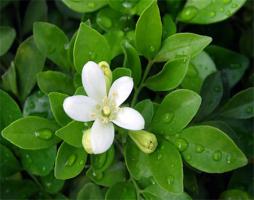Watering Newly Planted Trees and Shrubs: How Often Should You Do It?
Planting trees and shrubs is an excellent way to add beauty and value to your property. However, it is not enough to just plant them; you need to take care of them properly, especially when it comes to watering. Watering is one of the important aspects of caring for newly planted trees and shrubs, and it can determine their growth and survival. So, how often should you water newly planted trees and shrubs? In this article, we will discuss tips on watering newly planted trees and shrubs, the factors that affect watering frequency, and signs of overwatering and underwatering.
Watering Tips for Newly Planted Trees and Shrubs
Watering newly planted trees and shrubs is crucial, as they have not yet developed an extensive root system that can absorb water from the soil efficiently. Here are some tips to help you water your newly planted trees and shrubs:
Water your trees and shrubs slowly and deeply to encourage root growth.
Water at ground level, rather than from above, to ensure that the water goes straight to the roots.
Water in the morning or late afternoon to avoid evaporation and heat stress.
Water more frequently during the first two years after planting, as this is the time when the plants are establishing themselves.
Use a soaker hose or drip irrigation, as these methods are more efficient and can help conserve water.
Factors That Affect Watering Frequency
The amount and frequency of watering newly planted trees and shrubs depend on several factors, such as soil type, weather condition, and plant species. Here are the factors that affect watering frequency:
Soil Type
The type of soil in your garden affects the frequency of watering. Sandy soil, for example, drains water faster and needs to be watered more frequently, while clay soil retains water longer and needs less frequent watering.
Weather Condition
The weather condition also affects watering frequency. If it is hot and dry, you need to water more frequently, while if it is cool and moist, you can water less often.
Plant Species
Some plant species require more water than others. For example, drought-tolerant plants can survive with minimal watering, while water-loving plants need frequent watering to survive.
Signs of Overwatering and Underwatering
Watering newly planted trees and shrubs is essential, but too much or too little water can harm the plants. Here are the signs of overwatering and underwatering:
Overwatering
Yellowing leaves that fall off easily.
Moldy or unpleasant odor coming from the soil.
The soil is constantly wet or muddy.
Stunted growth or wilted leaves.
Underwatering
Leaves that are dry, crispy, or curling at the edges.
A drooping appearance or wilted leaves that do not recover after watering.
Slow growth or no new growth.
The soil is dry to the touch.
Conclusion
Watering newly planted trees and shrubs is crucial for their survival and growth. By following the tips we shared in this article, you can ensure that your plants get the right amount of water they need to thrive. Remember, the frequency of watering depends on several factors, so pay attention to your plant's needs and adjust your watering schedule accordingly. And always look out for signs of overwatering and underwatering, so you can take action before it's too late.

 how many times do yo...
how many times do yo... how many planted tre...
how many planted tre... how many pine trees ...
how many pine trees ... how many pecan trees...
how many pecan trees... how many plants comp...
how many plants comp... how many plants can ...
how many plants can ... how many plants and ...
how many plants and ... how many pepper plan...
how many pepper plan...































